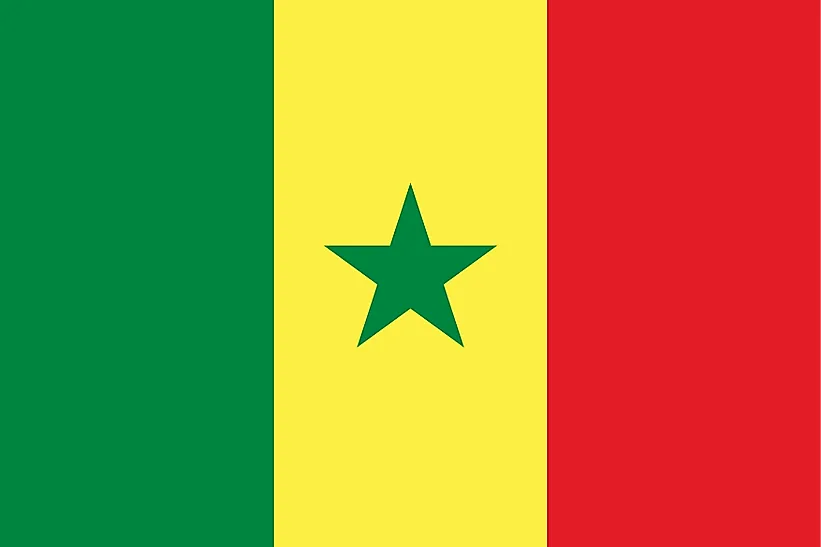
세네갈
| 대륙 | 아프리카 |
| 자본 | 다카르 |
| 인구 | 14,320,055 |
| GDP | $39.72억 |
| 1인당 GDP | $2,600 |
| 다이얼링 코드 | +221 |
| ISO 코드(2글자) | SN |
| ISO 코드(3글자) | SEN |
세네갈 소개
# 세네갈: 서아프리카의 관문
활기찬 문화와 역사적 의미를 지닌 나라, 세네갈에 오신 것을 환영합니다. 196,722㎢에 약 1,670만 명의 인구가 살고 있는 세네갈은 풍부한 문화적 전통과 현대적인 열망을 결합하여 서아프리카 민주주의의 등불로 자리 잡고 있습니다.
지리적 특징과 자연의 아름다움
세네갈의 지형은 북쪽의 사헬 사막부터 남쪽의 열대 우림까지 다양한 풍경을 아우릅니다. 세네갈에는 거대한 세네갈 강, 주우지 국립 조류 보호구역, 상징적인 핑크 호수(레바 호수)가 있습니다.
대서양을 따라 펼쳐진 해안 지역, 맹그로브 늪, 니오콜로 코바 국립공원 등 다양한 풍경이 펼쳐져 있습니다. 이 나라의 다양한 생태계는 사자, 코끼리, 수많은 조류 종을 포함한 다양한 야생동물을 지원합니다.
보호 지역에는 7개의 국립공원과 여러 보호 구역이 있습니다. 보전을 위한 국가의 노력은 생물 다양성을 보존하는 동시에 사막화에 맞서 싸우는 데 초점을 맞추고 있습니다.
문화 유산과 전통
세네갈 문화는 아프리카 전통과 이슬람 및 프랑스 영향의 활기찬 융합을 대표합니다. 세네갈의 유산에는 음발락스와 같은 독특한 음악 스타일, 전통 레슬링(라람), 테랑가(환대) 개념이 포함됩니다.
전통 예술에는 섬유 공예, 특히 바진 염색과 나무 조각이 포함됩니다. 문화적 관습은 그리스의 스토리텔링 전통과 이슬람과 현지 관습을 결합한 종교 축제를 특징으로 합니다.
세네갈 요리는 해안 지역과 농업 유산을 반영하여 티에부디엔(생선과 쌀)과 야사 같은 요리가 특징입니다. 공동 식사와 다도의 전통은 여전히 사회 생활의 중심을 이루고 있습니다.
역사 여행
세네갈의 역사는 고대 왕국부터 프랑스 식민지를 거쳐 1960년 독립에 이르기까지 다양합니다. 세네갈은 대서양 횡단 무역에서 중요한 역할을 담당했으며 이후 프랑스 서아프리카의 수도가 되었습니다.
중요한 시기에는 가나 제국과 졸로프 제국, 프랑스 식민 통치, 레오폴드 상고르의 민주화 전환기가 있습니다. 가나의 민주주의에 대한 헌신은 독립 이후에도 변함없이 이어지고 있습니다.
현대 경제 환경
오늘날 세네갈의 경제는 서비스업, 농업, 어업에 중점을 두고 있습니다. 세네갈은 전통적인 부문을 유지하면서 상당한 인프라를 개발해 왔습니다.
최근 이니셔티브는 경제 혁신, 인적 자본 개발, 좋은 거버넌스에 중점을 둔 세네갈 비상계획(PSE)을 강조하고 있습니다. 세네갈의 전략적 위치와 안정적인 민주주의는 세네갈의 경제 성장을 뒷받침합니다.
국제 관계 및 글로벌 포지셔닝
세네갈은 아프리카 및 국제기구에 적극적으로 참여하면서 지역 협력을 촉진하고 있습니다. 세네갈의 문화적 영향력은 예술, 음악, 문학으로 확장되고 있습니다.
알고 계셨나요?
- 세네갈은 아프리카 대륙의 가장 서쪽에 있는 나라라고요?
- 고레 섬의 돌아오지 않는 문이 노예 무역 시대의 상징이라고요?
- 세네갈에서 레슬링이 가장 인기 있는 스포츠인가요?
- 핑크 호수는 독특한 박테리아에서 색을 얻나요?
결론
세네갈은 문화적 풍요로움과 민주적 가치가 독특하게 결합된 나라입니다. 다양한 풍경부터 활기찬 예술계, 역사적 중요성, 현대적인 개발 이니셔티브에 이르기까지 세네갈은 고유한 특성을 보존하면서 계속 발전하고 있습니다. 세네갈은 기후 변화와 경제 개발 등의 과제를 해결하면서 서아프리카의 문화적, 민주적 리더로서의 입지를 유지하면서 지속 가능한 성장을 위해 최선을 다하고 있습니다.





